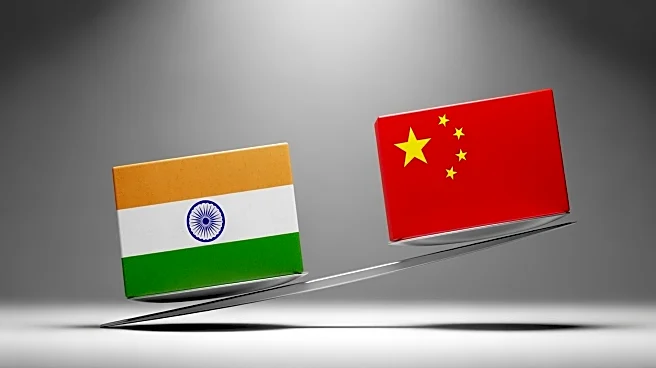What's Happening?
The Quality Control Order (QCO) has resulted in Indian polyester fibre being 35% more expensive than its Chinese counterpart. According to TexPro, the average price of virgin polyester fibre in India was
significantly higher than China's FOB price in October. While polyester prices in China have decreased over recent months, India's prices have only slightly eased, leading to a substantial cost disparity. This price difference is attributed to regulatory measures and market conditions affecting the Indian textile industry.
Why It's Important?
The increased cost of polyester fibre in India could have significant implications for the country's textile industry, which is a major economic sector. Higher raw material costs may lead to increased production expenses, potentially affecting the competitiveness of Indian textiles in the global market. This situation could benefit Chinese manufacturers, who may gain a price advantage in international trade. The disparity also highlights the impact of regulatory policies on industry dynamics and the need for strategic adjustments to maintain market competitiveness.
What's Next?
Indian textile manufacturers may need to explore cost-reduction strategies or seek alternative materials to mitigate the impact of higher polyester prices. The government might consider revisiting regulatory measures to support the industry and enhance its global competitiveness. Additionally, stakeholders in the textile sector could advocate for policy changes or incentives to address the cost disparity and promote sustainable growth. The evolving trade dynamics between India and China will likely continue to influence the industry's strategic decisions.












